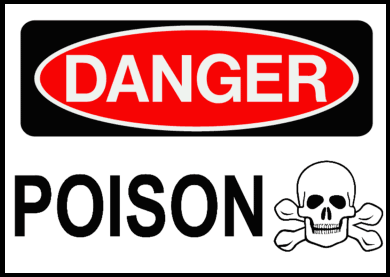Attire
- Safety goggles must be worn at all times
while in the laboratory. This rule must be followed whether you are actually working on an experiment or simply writing in
your lab notebook. You must wear safety goggles provided by the chemistry department.
- Contact lenses should not be worn. Even when worn under
safety goggles, various fumes may accumulate under the lens and cause serious injuries or blindness. I must know if you are
wearing them.
- Closed toe shoes and long pants must be worn in the lab.
Sandals and shorts are not allowed.
- Long hair must be tied back when using open flames.
Conduct
- Eating, drinking, and smoking are strictly prohibited in
the laboratory.
- No unauthorized experiments are to be performed. If you
are curious about trying a procedure not covered in the experimental procedure, consult with your laboratory instructor.
- Never taste anything. Never directly smell the source of
any vapor or gas; instead by means of your cupped hand, waft a small sample to your nose. Do not inhale these vapors but take
in only enough to detect an odor if one exists.
- Coats, backpacks, etc., should not near your laboratory
area. Try not to bring them to class on lab days. Beware that lab chemicals can
destroy personal possessions.
- Always wash your hands before leaving lab.
- Learn where the safety and first-aid equipment is located.
This includes fire extinguishers, fire blankets, and eye-wash stations.
- Notify the instructor immediately in case of an accident.
Proper Handling of Chemicals and Equipment
- Consider all chemicals to be hazardous
unless you are instructed otherwise. Material Safety Data Sheets (MSDS) are available in lab for all chemicals in use. These will inform you of any hazards and precautions
of which you should be aware.
- Know what chemicals you are using. Carefully read the label
twice before taking anything from a bottle. Chemicals in the lab are marked with NFPA hazardous materials diamond labels. Learn how to interpret these labels.
- Excess reagents are never to be returned
to stock bottles. If you take too much, dispose of the excess.
- Many common reagents, for example, alcohols and acetone,
are highly flammable. Do not use them anywhere near open flames.
- Always pour acids into water. If you pour water into acid,
the heat of reaction will cause the water to explode into steam, sometimes violently, and the acid will splatter.
- If chemicals come into contact with your skin or eyes,
flush immediately with copious amounts of water and consult with your instructor.
- Never point a test tube or any vessel that you are heating
at yourself or your neighbor--it may erupt like a geyser.
- Dispose of chemicals properly. Waste containers will be
provided and their use will be explained by your TA. Unless you are explicitly told otherwise, assume that only water may
be put in the lab sinks.
- Clean up all broken glassware immediately and dispose of
the broken glass properly.
- Contact the stockroom for clean-up of mercury spills.
- Never leave burners unattended. Turn them off whenever
you leave your workstation. Be sure that the gas is shut off at the bench rack when you leave the lab.
- Beware of hot glass--it looks exactly like cold glass.

Click on danger sign to go to safety contract
|